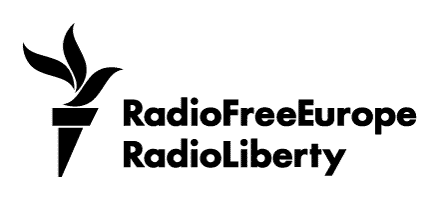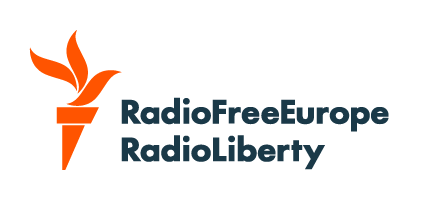European leaders are set to join Ukrainian President Volodymyr Zelenskyy’s planned meeting with US President Donald Trump to discuss steps toward ending the war in Ukraine, as Moscow and Kyiv continue to exchange air strikes.
As Ukraine pushes for Europe to take part in negotiations over a settlement of the conflict, European leaders will accompany Zelenskyy to Washington on August 18.
"I will join the meeting with President Trump and other European leaders at the White House tomorrow," European Commission President Ursula von der Leyen said.
Following von der Leyen’s statement, a stream of European leaders, along with NATO Secretary-General Mark Rutte, have also announced their plans to participate.
French President Emmanuel Macron, British Prime Minister Keir Starmer, German Chancellor Friedrich Merz, Italian Prime Minister Giorgia Meloni, and Finnish President Alexander Stubb, are expected to join.
“Our goal for tomorrow’s talks is to present a united front between Ukraine and its European allies,” Macron said.
"If we show weakness today in front of Russia, we are laying the ground for future conflict,” he added.
Earlier, von der Leyen welcomed Zelenskyy in Brussels, where they joined a call with the leaders of Ukraine’s European backers.
"It is important that Europeans are involved at every stage to ensure reliable security guarantees together with America," Zelenskyy wrote in an X post on August 16, following the US-Russia talks in Alaska.
The Alaska summit, held on August 15, was the highest level diplomacy between Washington and Moscow since Russia’s 2022 invasion of Ukraine. However, it appeared to bring no major shift in President Vladimir Putin’s war aims in Ukraine.
According to unnamed sources quoted by multiple news organizations, Putin told Trump he could agree to freezing the front lines in Ukraine's Zaporizhzhya and Kherson regions if Ukraine fully withdraws from the Luhansk and Donetsk regions.
Russia claims to have annexed all four regions. It controls most of the Luhansk region and about 70 percent of the Donetsk region, and partially controls Zaporizhzhya and Kherson regions.
In Brussels on August 17, Zelenskyy said he saw current front lines as a basis for the negotiation process, suggesting that Putin has had "no success" in the war-torn Donetsk region. "In 12 years, he has not been able to capture it," he added.
In a social media post, Trump said after the Alaska meeting that it "was determined by all that the best way to end the horrific war between Russia and Ukraine is to go directly to a Peace Agreement, which would end the war, and not a mere Ceasefire Agreement."
Ukraine and European allies, as well as the United States, have long called for a cease-fire to be implemented as a step toward a comprehensive peace deal.
Speaking alongside Zelenskyy in Brussels, von der Leyen told journalists that for Europe the word “cease-fire” was less important than the need to end the killing.
"It's not the term itself. It's the content that matters. It is so important to have as soon as possible a trilateral meeting between the President of Ukraine, the President of the United States, and of Russia," she said.
US Secretary of State Marco Rubio, in comments to NBC's "Meet the Press" program on August 18, insisted that an immediate cease-fire is "not off the table."
"I think what the president said...it was agreed to by all that the best way to end this conflict is through a full peace deal."
"There’s no doubt about that....Now, whether there needs to be a cease-fire on the way there, well, we’ve advocated for that. Unfortunately, the Russians as of now have not agreed to that," he added.
According to an unnamed former Kremlin official quoted by the Financial Times, Putin also restated his demands relating to what he calls the "root causes" of the conflict. These include an end to Ukraine's NATO membership bid and a scaling-back of NATO's military presence on its eastern flank.
However, Steve Witkoff, an envoy widely regarded as one of the key US negotiators with Moscow, suggested that Trump and Putin have agreed to provide “robust security guarantees” for Ukraine.
“I would describe [them] as game-changing,” Witkoff told CNN on August 17.
When asked about the matter by RFE/RL’s Ukrainian Service, Zelenskyy said that for now, the only real security guarantee remains the Ukrainian army.
“Is there a [troop deployment]? Do we have air protection like other countries? Do we have the [full package of air defense]? These are just questions for now. We really need answers,” Zelenskyy added.
Despite what may be the most significant diplomatic efforts since February 2022, Russia and Ukraine continued to exchange air strikes.
At least five people were killed and four others injured by Russian shelling in the Donetsk region, according to Vadym Filashkin, head of the local military administration.
"Over the past day, Russian forces fired 38 times at settlements in the Donetsk region," he said in a Telegram post on August 17.
In Russia, a Ukrainian drone attack damaged a power line at a station in the Voronezh region, which borders Ukraine, regional governor Aleksander Gusev said. According to him, a railway employee was injured as a result of the attack.















